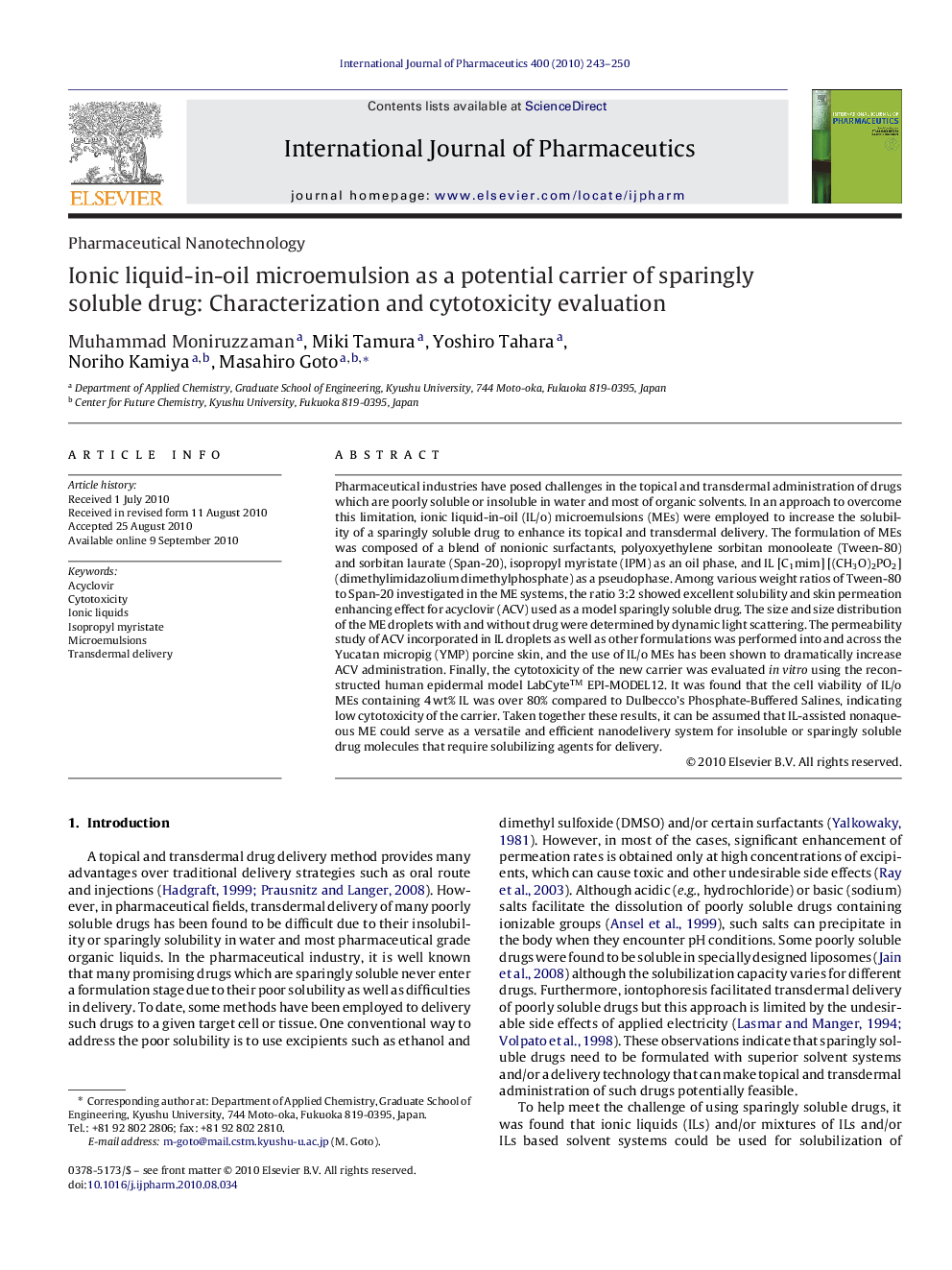| Article ID | Journal | Published Year | Pages | File Type |
|---|---|---|---|---|
| 2503808 | International Journal of Pharmaceutics | 2010 | 8 Pages |
Pharmaceutical industries have posed challenges in the topical and transdermal administration of drugs which are poorly soluble or insoluble in water and most of organic solvents. In an approach to overcome this limitation, ionic liquid-in-oil (IL/o) microemulsions (MEs) were employed to increase the solubility of a sparingly soluble drug to enhance its topical and transdermal delivery. The formulation of MEs was composed of a blend of nonionic surfactants, polyoxyethylene sorbitan monooleate (Tween-80) and sorbitan laurate (Span-20), isopropyl myristate (IPM) as an oil phase, and IL [C1mim] [(CH3O)2PO2] (dimethylimidazolium dimethylphosphate) as a pseudophase. Among various weight ratios of Tween-80 to Span-20 investigated in the ME systems, the ratio 3:2 showed excellent solubility and skin permeation enhancing effect for acyclovir (ACV) used as a model sparingly soluble drug. The size and size distribution of the ME droplets with and without drug were determined by dynamic light scattering. The permeability study of ACV incorporated in IL droplets as well as other formulations was performed into and across the Yucatan micropig (YMP) porcine skin, and the use of IL/o MEs has been shown to dramatically increase ACV administration. Finally, the cytotoxicity of the new carrier was evaluated in vitro using the reconstructed human epidermal model LabCyte™ EPI-MODEL12. It was found that the cell viability of IL/o MEs containing 4 wt% IL was over 80% compared to Dulbecco's Phosphate-Buffered Salines, indicating low cytotoxicity of the carrier. Taken together these results, it can be assumed that IL-assisted nonaqueous ME could serve as a versatile and efficient nanodelivery system for insoluble or sparingly soluble drug molecules that require solubilizing agents for delivery.
Graphical abstractIonic liquid-in-oil microemulsions have been adopted to increase the solubility of insoluble or sparingly soluble drugs to enhance their topical and transdermal delivery.Figure optionsDownload full-size imageDownload as PowerPoint slide
